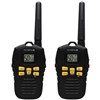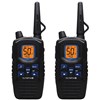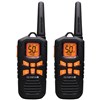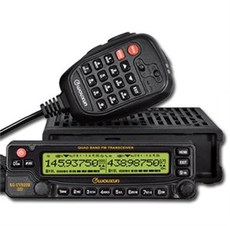We now have a new brand in the world of FRS and GMRS radios - Olympia! Olympia has launched their line of FRS/GMRS radios with three mid to high-end models: the R100, R300, and R500. As a new brand in this industry, it appears that Olympia hopes to compete by delivering a high performance product at a low price - also known as value. All three models are priced lower than comparable products from other manufacturers, look great, and include a three year warranty.
Olympia = Motorola Talkabout
The big secret is that Olympia radios are made by Giant International - the same company that has designed, manufactured, distributed, and marketed Motorola Talkabout radios for over a decade. Motorola has actually had very little to do with the Talkabout line of radios - they license their brand to Giant. Motorola has recently decided to make some changes with this arrangement and Giant now has some uncertainty regarding their future. This line of Olympia radios provides Giant with their very own brand of radios which they have complete control over.
The great news for people in the market to purchase radios is that the R100, R300, and R500 are similar in performance and features to the Motorola MR350R, MT350R, and MS350R radios, respectively. From what we can tell, the radio performance and many features of these Olympia radios match those of the Talkabout models. Olympia even uses the same batteries and accessories as the Talkabout series.
So what does this mean? If you're looking to purchase a Motorola Talkabout MR350R, MT350R, or MS350R you should look closely at the Olympia radios and give them some consideration. You may find yourself with a very similar radio but with a 3 year warranty instead of a 1 year!
Radio Details

R100 - This is a full featured radio that is IP54 water resistant, has NOAA weather alerts, USB plug-in charging, 50 channels, and 3 year warranty. Similar in performance to the Motorola MR350R, but lacking VOX, vibrate mode, and flashlight.

R300 - The R300 is a slightly larger radio from the R100 and adds the VOX, vibrate alert, and flashlight. It is very similar in features to the Motorola MT350R.

R500 - The R500 is around the same size as the R300, but it is a truly waterproof radio. It can be completely submerged in water, and it will even float if dropped in water. Unlike the R100 and R300, it does not support USB charging. Instead it includes a dual-pocket drop-in charger. This radio is very similar to the Motorola MS350R.
Marketing Overload
As we've pointed out before, a lot of marketing hype has evolved in this industry over the years as FRS/GMRS radio manufacturers try to make their products stand out from competitors. The most prominent example of this is excessive range claims, but we also see it with waterproof claims and extra channels. With all of the great things about these new Olympia radios, one negative is that they chose to go "all-in" with the marketing hype. They have topped Cobra, Midland, and Motorola's already excessive range claims (their models claim 37, 40, and 42 miles, respectively). All three of the models claim to be waterproof even though only one (the R500) is actually submersible. Also they have joined Midland by offering "extra channels" - all three models have 50 channels, even though there are only 22 FRS and GMRS frequencies.
In general, I love these new Olympia radios and I think they are going to be very successful. They offer a lot of features at a great price, and I think that they've given potential Motorola Talkabout purchasers something to consider.










